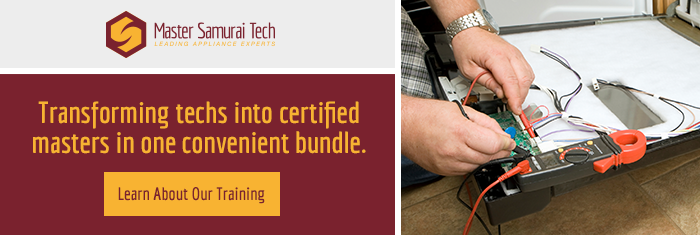First, verify that you have 240 VAC at the power cord terminal on the dryer. No cheating here! You gotta get eyeballs and meter on that terminal ‘cuz you might find something like this:
Okay, if it passes the Essential Eyeball Test®, then it’s time to put your meter on it. Check for the voltages as shown in the diagram below:
If all that looks good, then and only then are you ready to look for trouble inside the dryer. Here’s a spiffy troubleshooting technique for splitting the problem in half, L1 side from the L2 side, developed by Sublime Master RegUS_PatOff, a sensei at the Samurai School of Appliantology:
Set the Dryer to run a Regular Heat Cycle.
Keep the Door open so the Drum Motor (and Heater) doesn’t run.
Test for 120v AC from each side of each Thermal device to chassis (ground).
and from each side of Heater to chassis (ground).With the Door open, and the Drum Motor not running, that disconnects L2 power.
L1 power should flow all the way through, from the Timer, (120v measured to chassis, ground) and from each side of the following:
Operating Thermostat, Thermal Fuse, Hi-Limit Thermostat, Heater Element, all the way up to one side of the Motor Centrifugal Switch,
The other side of the Centrifugal Switch will (should) have 120v to chassis (ground), but that would be from L2.
To learn more about your dryer, or to order parts, click here.



